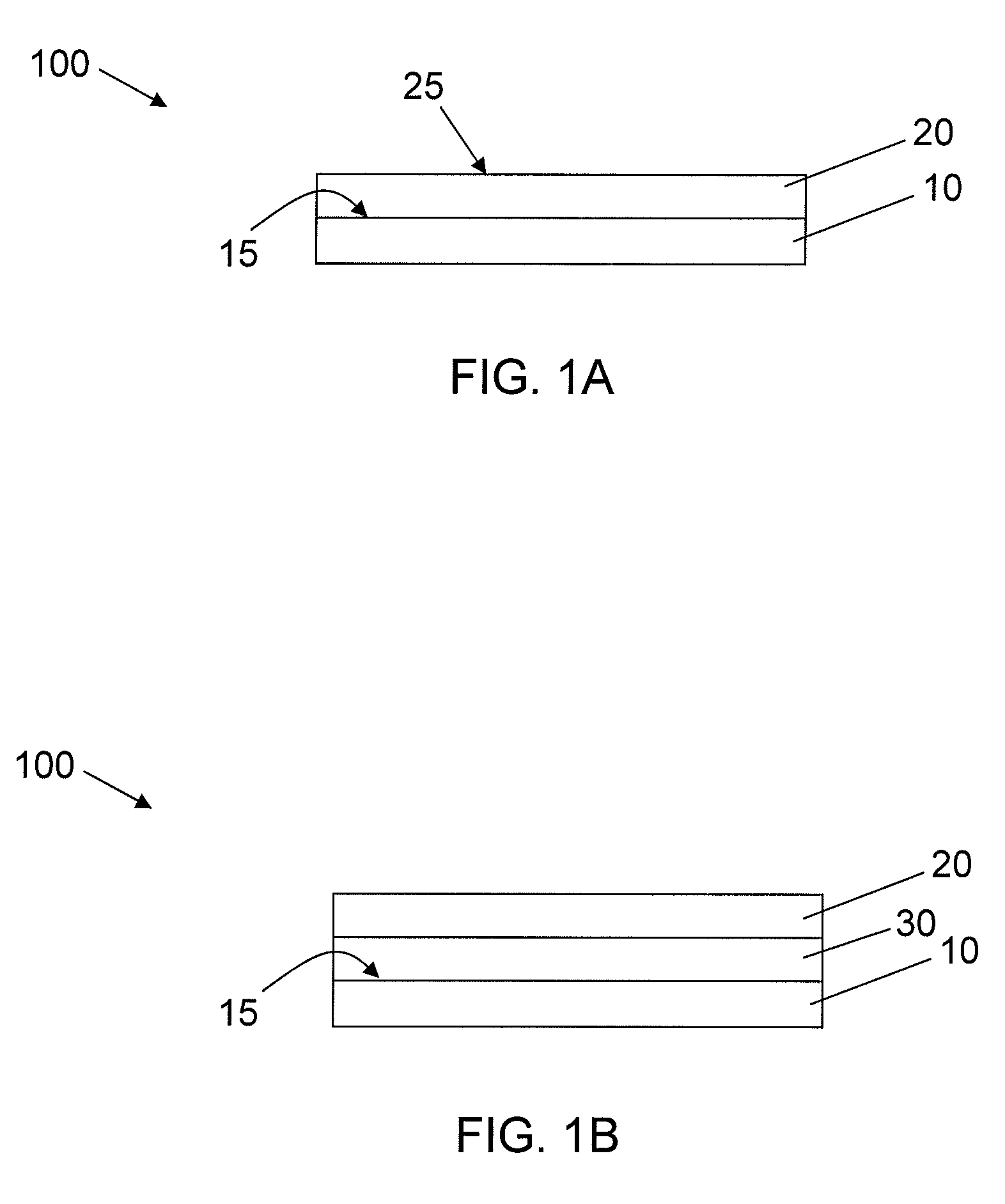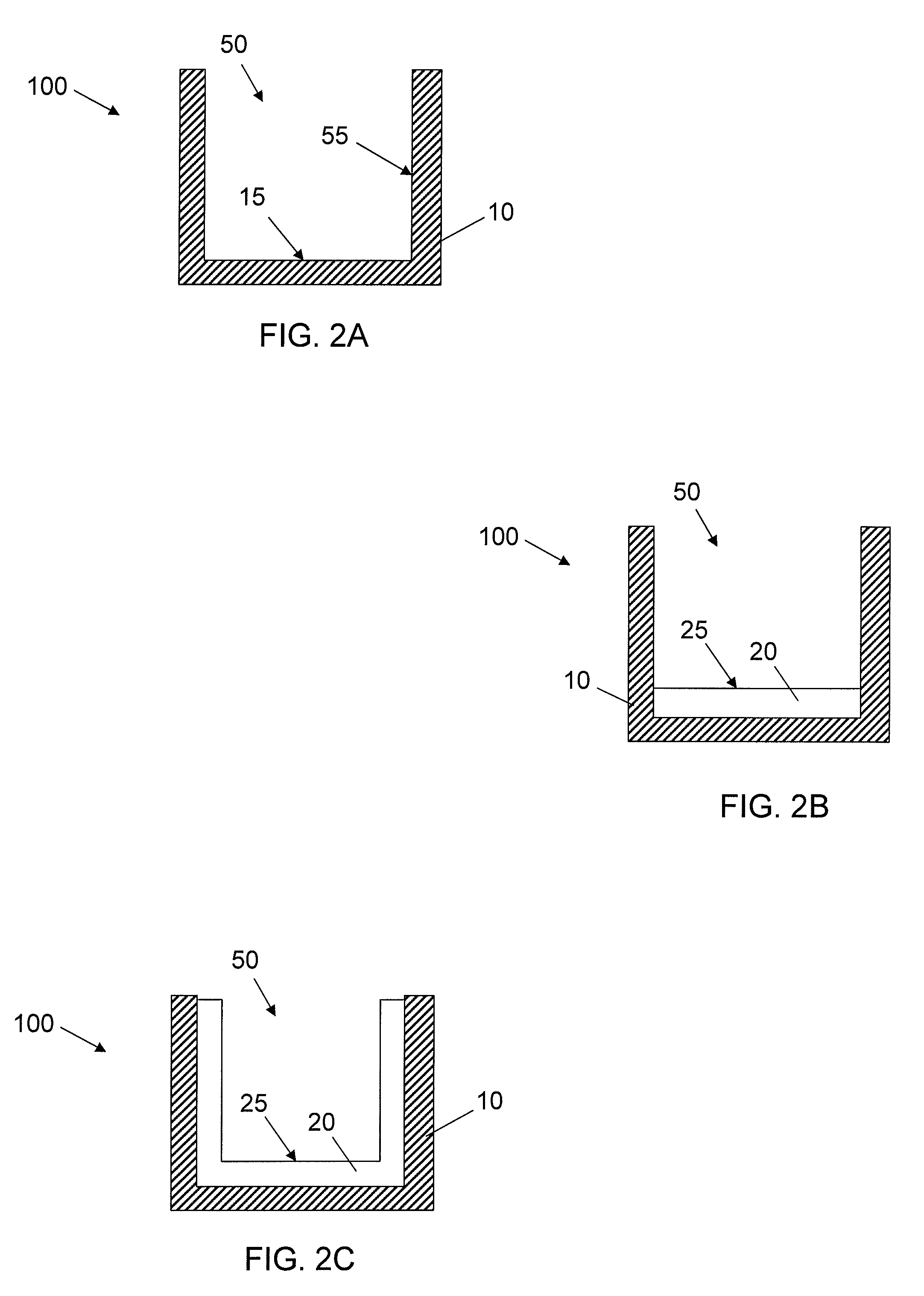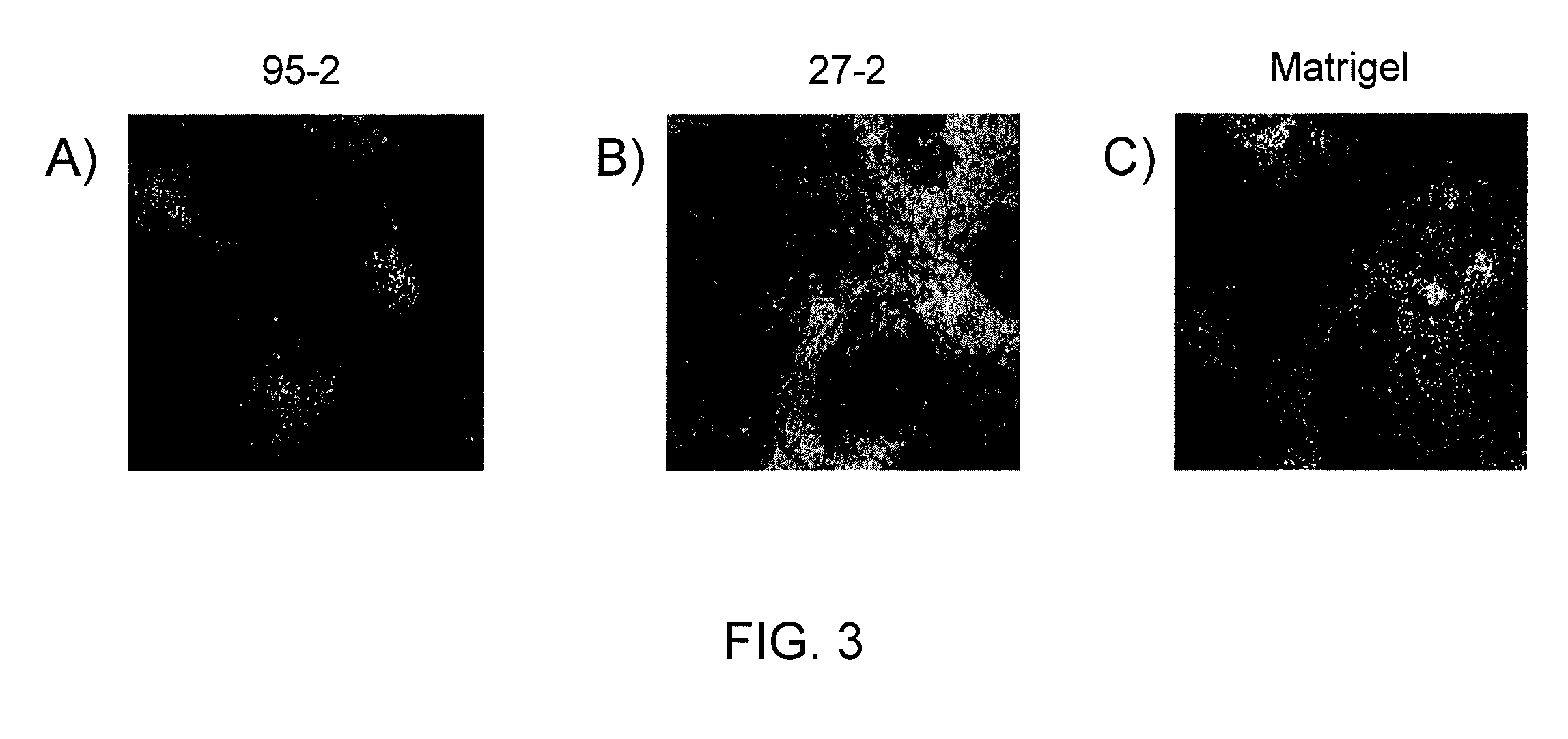Synthetic surfaces for culturing stem cell derived cardiomyocytes
a stem cell and surface technology, applied in the field of cell culture articles, can solve the problems of reducing the shelf life of cells, affecting the development of hesc-based treatments, and the inability of the heart to regenerate sufficient cardiomyocytes to undergo extensive repair, etc., to reduce potential contamination problems, improve shelf life, and reduce potential contamination problems
- Summary
- Abstract
- Description
- Claims
- Application Information
AI Technical Summary
Benefits of technology
Problems solved by technology
Method used
Image
Examples
example 1
Identification of Acrylic Coating Surfaces Suitable for Culturing Stem Cell Derived Cardiomyocytes in a Chemically Defined Medium
1. Coating Preparation
[0060]Acrylic coating surfaces were prepared from homomonomers or copolymers of various acrylate and methacrylate monomers. For copolymers two different acrylate or methacrylate monomers were used. Briefly, the monomers were mixed with 1% w / w of photoinitiator Irgacure 819 (Ciba Specialty Chemiscals, Inc.) and used along or blended with other monomer formulation (monomer with 1% w / w of photoinitiator) according to volume ratio of 70:30. Then formulation was placed in a well of a vacuum plasma treated cyclic olefin copolymer plate (provided by Corning Life Science Development group) at a volume of 2.5 pt. The plate was allowed to lay horizontally flat for 30 min for the formulation to spread out. The coatings were cured with 13 mW / cm2 pulsed (100 Hz) UV light (Xenon RC-700) for 1 min in N2 purged box (with fused silica window). All the...
PUM
 Login to View More
Login to View More Abstract
Description
Claims
Application Information
 Login to View More
Login to View More - R&D
- Intellectual Property
- Life Sciences
- Materials
- Tech Scout
- Unparalleled Data Quality
- Higher Quality Content
- 60% Fewer Hallucinations
Browse by: Latest US Patents, China's latest patents, Technical Efficacy Thesaurus, Application Domain, Technology Topic, Popular Technical Reports.
© 2025 PatSnap. All rights reserved.Legal|Privacy policy|Modern Slavery Act Transparency Statement|Sitemap|About US| Contact US: help@patsnap.com



